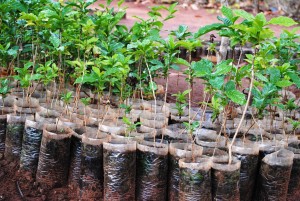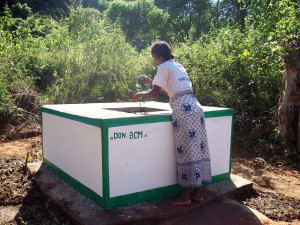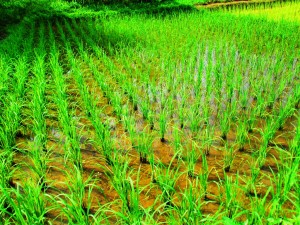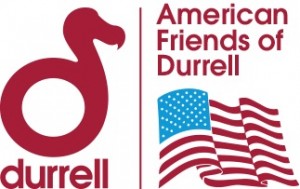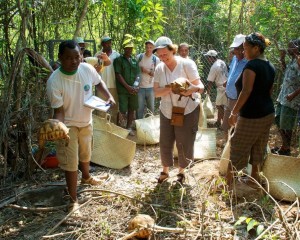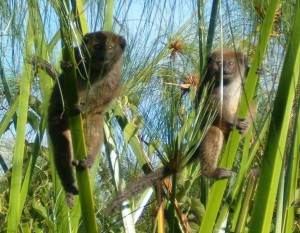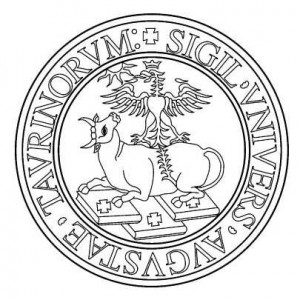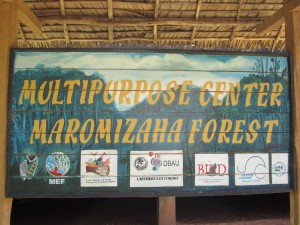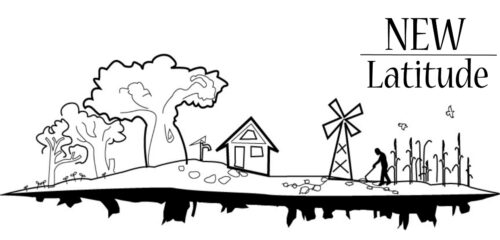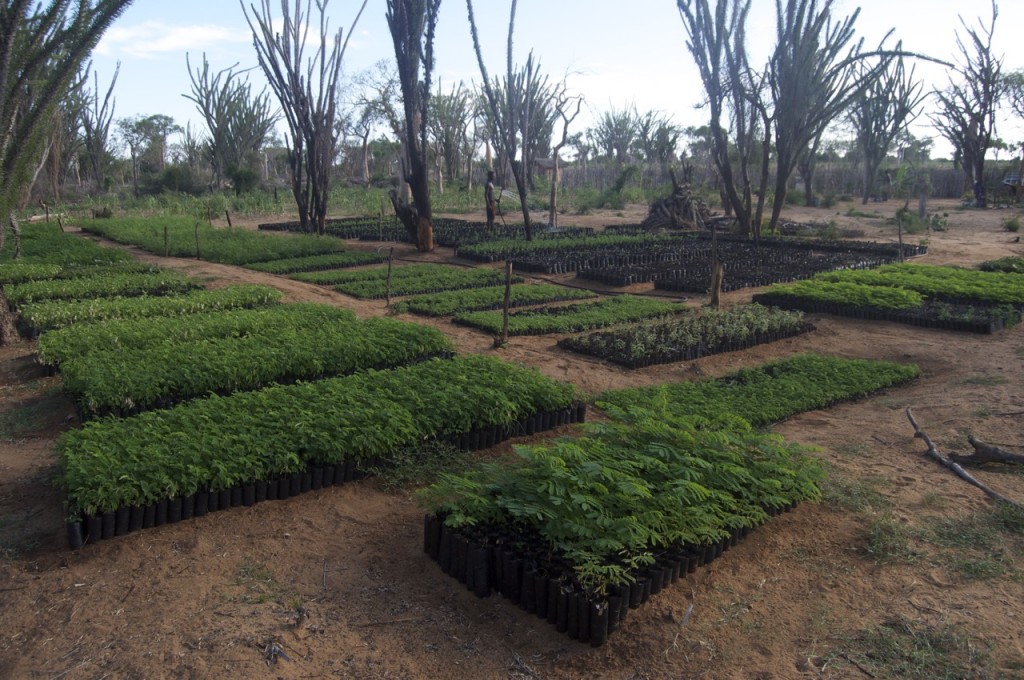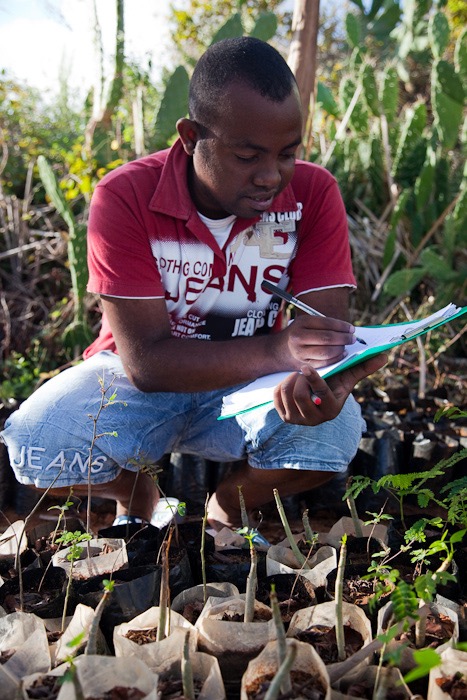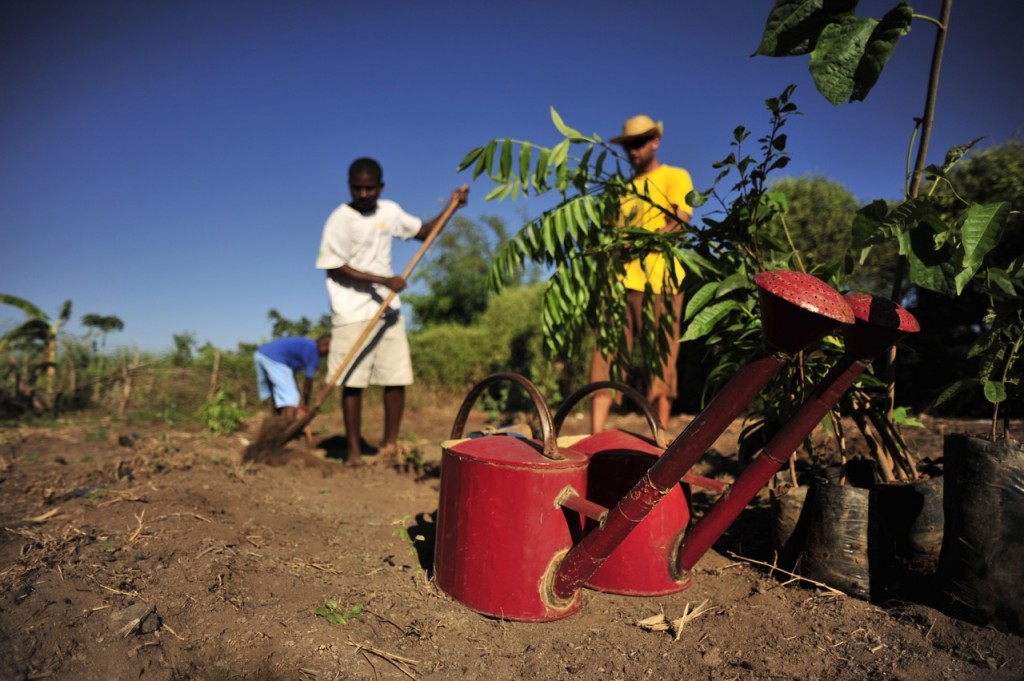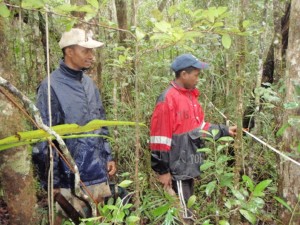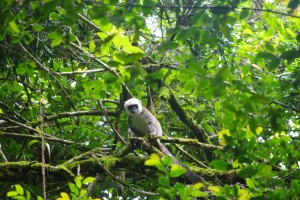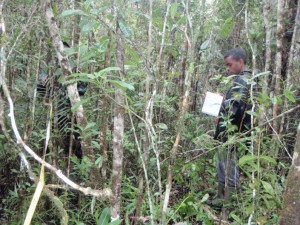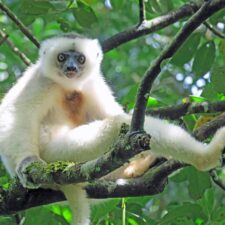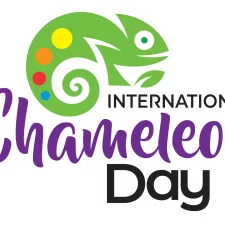WWF Madagascar
What We Do
WWF Madagascar has been at the forefront of lemur conservation in Madagascar for over fifty years. Our first ever project involved setting up a small reserve dedicated to the protection and prosperity of the Aye-aye (Daubentonia madagascariensis), leading to the creation of the Nosy Mangabe special reserve. Since then, lemurs have remained some of the organization’s priority species at our project sites across the island.
How We Protect Lemurs And Other Wildlife
Habitat protection
WWF has been, and continues to be involved in, the establishment and management of many protected areas across Madagascar, which serve to conserve and protect threatened habitats for many lemur species as well as a wide variety of other flora and fauna. In addition, WWF Madagascar carries out a range of actions in Madagascar aimed at protecting habitat. For example, in the Northern Forest Landscape, WWF trains and equips local communities to perform forest patrols. One of the functions of the patrols is to collect information on species locations and populations. Both the presence of the patrols and the data they collect are being used to combat poaching of lemurs and other animal species.
WWF are currently working on habitat protection issues across Madagascar in many sites, including: Marojejy, Kirindy Mitea, Tsimanampesotoe, Amoron’i Onilahy, Ankodida, Corridor Marojejy Tsaratanana, Anjanaharibe Sud, Nord Ifotaka, and Ranobe PK 32.
Influencing environmental policy
WWF Madagascar, and WWF as a whole, are able to raise awareness of the threats facing lemurs at the national and international level. An example of the positive impacts of our work include WWF’s debt-for-nature concept, which pioneered the idea that a nation’s debt could be bought in exchange for in-country conservation programming. WWF has used this program to generate over $50 million (USD) of funding in Madagascar for conservation from 1989 to 2008. In addition, WWF Madagascar was a key facilitator in the First International Conference on the Conservation of Nature and Natural Resources in Madagascar; this meeting was the foundation of the National Environmental Action Plan that was later implemented in Madagascar in the 1980s.
What Lemur Species We Protect
Over the years, WWF Madagascar has been key to the protection of many different lemur species. Nowadays, and alongside ongoing projects to protect numerous lemur species, WWF’s strategy identifies the Silky simpona (Propithecus candidus) as one of our flagship species for the Northern Forest Landscape, the largest remaining stand of humid forest in Madagascar.
In 2011, WWF, in collaboration with Dr. Erik Patel, and international expert on the Silky simpona, conducted a vulnerability analysis on this species; the first of its kind. This groundbreaking research helped conservationists understand more about the different threats facing a species, and was expanded in 2012 in collaboration with the IUCN (International Union for Conservation of Nature) and again in 2014 with the help of GERP. This research now helps scientists and organizations better plan their conservation programs.
WWF Madagascar has performed fieldwork to collect vulnerability data and information on species viability. The has helped to understand the factors that render the Silky simpona vulnerable, in order to start implementing adapted management measures that will help the species to face future climate and non-climate pressures.
How We Support Local Communities
WWF puts local communities at the center of conservation projects. Local communities that live closest to valuable, fragile lemur habitats are pivotal to the success of lemur conservation because they are the ones interacting with, living in and depending on the forests and species on a daily basis.
WWF manages a wide array of social development programming; in the past, the organization has developed eco-tourism projects, designed public health programs, and even worked with the Malagasy government to create eco-labels for Malagasy shrimp which are traded on the international market through the shrimp aquaculture industry.
Local conservation management
In the Northern Forest Landscape, a green belt composed of 39 community-based managed areas is being established around the created protected area of COMATSA (245,000 ha). Each area managed by local communities first undergoes a zoning process and then local management plans are developed. As the Silky simpona is a flagship species for the entire area, activities related to its conservation and resilience building will be developed for the protected areas as well as for all the community-managed areas where the species is present.
Environmental education
Since 1987, WWF Madagascar has been growing its environmental education program, in collaboration with the Malagasy Ministry of Education. The program now has 515 student clubs across 46 districts in Madagascar and impacts over 50,000 students in the country. In addition, the program also prints the Vintsy Magazine, an environmentally focused publication, which has been in print for 64 issues.


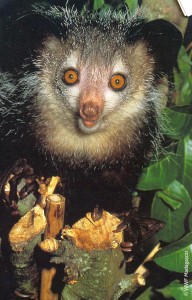
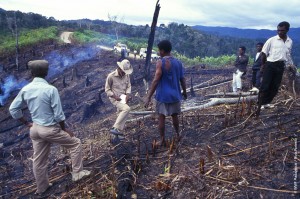
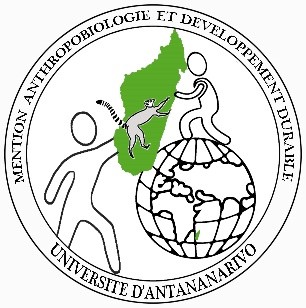
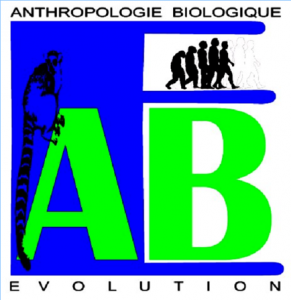 The Mention Anthropobiologie et Développement Durable (ADD) houses the unique primatology laboratory at the University of Madagascar which contains both lemuroid subfossils and holotypes of living lemurs.
The Mention Anthropobiologie et Développement Durable (ADD) houses the unique primatology laboratory at the University of Madagascar which contains both lemuroid subfossils and holotypes of living lemurs.
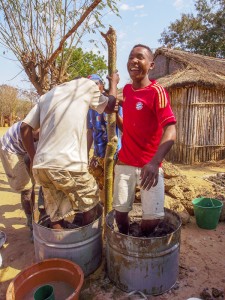 Chances for Nature spread, communicate, and promote sustainable natural resource use techniques as well as raise awareness for Madagascar’s extraordinary biodiversity. We achieve these goals through outreach, education and capacity building in small villages in rural Madagascar. Chances for Nature currently focuses many of its efforts in Central Menabe (west Madagascar), but does not limit its education initiatives to just this region.
Chances for Nature spread, communicate, and promote sustainable natural resource use techniques as well as raise awareness for Madagascar’s extraordinary biodiversity. We achieve these goals through outreach, education and capacity building in small villages in rural Madagascar. Chances for Nature currently focuses many of its efforts in Central Menabe (west Madagascar), but does not limit its education initiatives to just this region.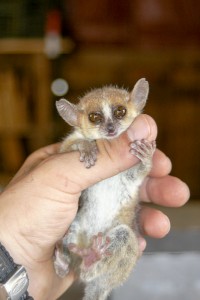 The area where we have focused many of our efforts, in west Madagascar, is home to the largest remaining dry deciduous forest of Western Madagascar. This unique ecosystem is home to high floral and faunal diversity, including the world’s smallest primate: Madame Berthe’s mouse lemur (Microcebus berthae).
The area where we have focused many of our efforts, in west Madagascar, is home to the largest remaining dry deciduous forest of Western Madagascar. This unique ecosystem is home to high floral and faunal diversity, including the world’s smallest primate: Madame Berthe’s mouse lemur (Microcebus berthae).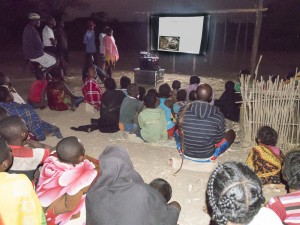 We use Malagasy-language multimedia presentations and films to promote sustainable use of natural resources. In 2013, we produced a film designed to illustrate the uniqueness of Madagascar’s biodiversity; the film also explained the consequences of unsustainable use of natural resources and presented three alternative sustainable techniques and behaviors that could be used to improve the lives of local people while reducing natural resource depletion. This film, as well as other multimedia presentations, reached Malagasy communities in 2013 and 2014 through the help of a mobile cinema. This mobile cinema works exclusively through pedal (bicycle) power and thus reaches a large amount of people – even in remote areas without electricity. The cinema was even used to raise awareness and supplement environmental education in several Malagasy schools.
We use Malagasy-language multimedia presentations and films to promote sustainable use of natural resources. In 2013, we produced a film designed to illustrate the uniqueness of Madagascar’s biodiversity; the film also explained the consequences of unsustainable use of natural resources and presented three alternative sustainable techniques and behaviors that could be used to improve the lives of local people while reducing natural resource depletion. This film, as well as other multimedia presentations, reached Malagasy communities in 2013 and 2014 through the help of a mobile cinema. This mobile cinema works exclusively through pedal (bicycle) power and thus reaches a large amount of people – even in remote areas without electricity. The cinema was even used to raise awareness and supplement environmental education in several Malagasy schools.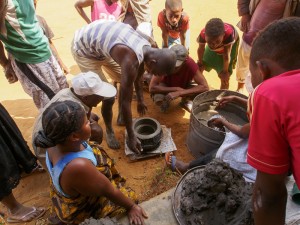 As 80% of the energy consumption in Madagascar is used for cooking, the use of environmentally-friendly stoves can have a positive impact on habitat protection. Our approach combines environmental education, the promotion of sustainable techniques and behaviors, and modern media which has turned out to be very successful and motivated two communities to build and use the stoves.
As 80% of the energy consumption in Madagascar is used for cooking, the use of environmentally-friendly stoves can have a positive impact on habitat protection. Our approach combines environmental education, the promotion of sustainable techniques and behaviors, and modern media which has turned out to be very successful and motivated two communities to build and use the stoves.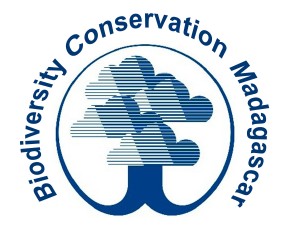
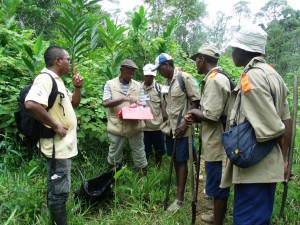 Biodiversity Conservation Madagascar (BCM) was established in 2002 as the conservation arm of Bioculture (Mauritius) Ltd. Our main goals are to conserve threatened forests in east and west Madagascar that are of high biodiversity value, especially those rich in lemur species. We currently work in the 2,400 hectare lowland rainforest in Sahafina (East Madagascar) and the Beanka dry deciduous forest in the Maintirano region (West Madagascar).
Biodiversity Conservation Madagascar (BCM) was established in 2002 as the conservation arm of Bioculture (Mauritius) Ltd. Our main goals are to conserve threatened forests in east and west Madagascar that are of high biodiversity value, especially those rich in lemur species. We currently work in the 2,400 hectare lowland rainforest in Sahafina (East Madagascar) and the Beanka dry deciduous forest in the Maintirano region (West Madagascar).